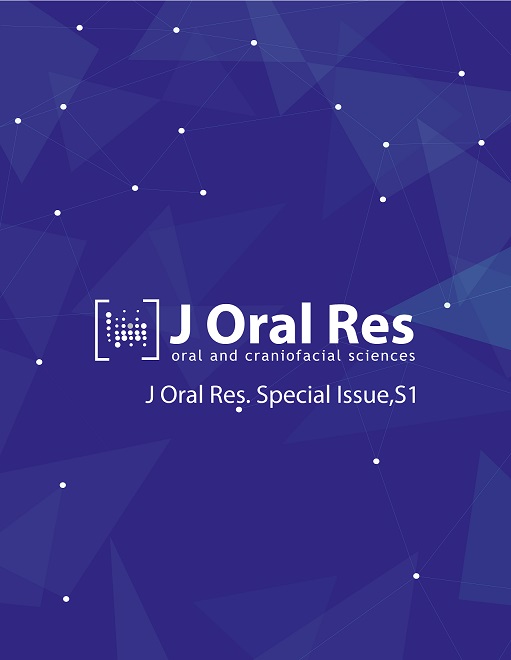Influence of different orientations and rates of bidirectional distraction osteogenesis of the mandibular corpus: a three-dimensional study.
Abstract
Objective: The objective of this study was to evaluate the biomechanical effect of mandibular corpus distraction osteogenesis with different orientations and rates. Materials and Methods: A three-dimensional model of the mandible was created. The vertical surgical cut was made, the force was applied horizontally in a bidirectional manner within two orientations: parallel to the occlusal plane and parallel to the inferior border of the mandible with three rates (0.5mm, 1mm and 1.5mm). Results: The maximum values for von Mises stress when the force was applied parallel to the inferior border of the mandible with all three rates were smaller than those with force direction parallel to the occlusal plane. The displacement in all three directions x, y, and z were not parallel and prominent in the anterior part of the mandible, while the movement at the posterior part is negligible, x and z displacement were bigger when force was applied parallel to the inferior border of the mandible, z displacement was more prominent than x and y displacement, both directions produced upward rotation of the mandible, this rotation was more noticeable when the force was applied parallel to the inferior border of the mandible. Conclusions: A vertical cut can be used in the patient with a long anterior face. This site of distraction achieves more lengthening of mandible than expansion.
References
2. Baur DA, Meyers AD. Distraction osteogenesis of the mandible. Drugs and diseases, clinical procedures. 2016;3: 08.
3. Singh M, Vashistha A, Chaudhary M, Kaur G. Biological basis of distraction osteogenesis — A review. J Oral Maxillofac Surg Med Pathol. 2016;28:1–7.
4. Rachmiel A, Shilo D. The use of distraction osteogenesis in oral maxillofacial surgery. Ann Maxillofac Surg. 2015; 5(2): 146-7.
5. Sensoy AT, Kaymaz I, Ertas U, and Kiki A. Determining the Patient –Specific Optimum Osteotomy Line for Severe Mandibular Retrognathia Patients. J Craniofac Surg. 2018;29(5):e449-54.
6. Sanal KO, Ozden B, Bas B. Finite element evaluation of different osteosynthesis variations that used after segmental mandibular resection. J Craniofac Surg. 2017; 28:61–5.
7. Sethi P, Patil S, Keluskar KM. Mandibular distraction osteogenesis: Bid adieu to major osteotomies- A review. J Ind Orthod SOC. 2006; 39:213-29.
8. Toro-Ibacache V, Fitton LC, Fagan MJ, O’Higgins P. Validity and sensitivity of a human cranial finite element model: implications for comparative studies of biting performance. J Anat. 2016; 228:70–84.
9. Robinson RC, O'Neal PJ, Robinson GH. Mandibular distraction force: laboratory data and clinical correlation. J Oral Maxillofac Surg. 2001; 59(5):539-44.
10. Tehranchi A, Behnia H, Heidaroour M, Toutiaee B, Khosropour MJ. Biomechanical effects of surgical cut direction in unilateral mandibular lengthening by distraction osteogenesis using a finite element model. J Oral Maxillofac Surg. 2012;41:667-72.
This is an open-access article distributed under the terms of the Creative Commons Attribution License (CC BY 4.0). The use, distribution or reproduction in other forums is permitted, provided the original author(s) and the copyright owner(s) are credited and that the original publication in this journal is cited, in accordance with accepted academic practice. No use, distribution or reproduction is permitted which does not comply with these terms. © 2024.











